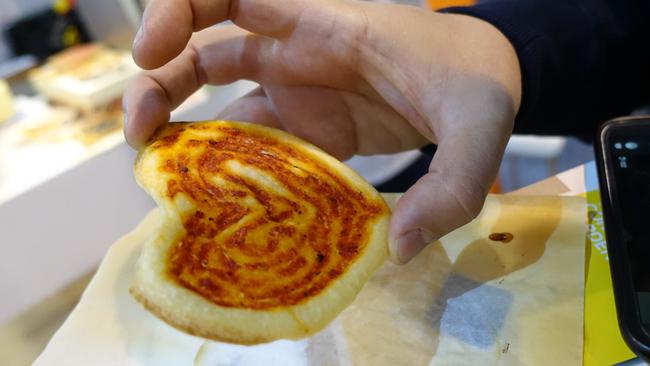3D printable food - it’s the shape of things to come
Bored by the shape of your food? Relief is here!

We have heard how 3-D printing is changing the design and manufacturing world, but it seems a 3-D printed food revolution is about to arrive — without most of us realising what 3-D printed food actually is.
In the future, beautifully shaped sugar treats, small cakes and coffee scrolls, and even small pies might be put together by a printer slavishly following a digital design created using 3-D software.
To appreciate this process, you have to you understand what 3-D printing is. A basic 3-D printer creates a model like the Eiffel Tower by meticulously adding small layers of melted plastic, layer by layer. The 3-D printers sold at Australian retailers typically use plastic polymers.
But 3-D printing isn’t confined to plastics. In 2013, Irish firm Mcor Industries produced a 3-D printer that could create solid, lifelike designs by crushing reams of A4 office paper, sheet by sheet. The printer, which cost about $60,000, inserted ink to build realistic painted models of people, toy houses and pieces of fruit.
Recently we reported on how incredibly realistic Mini-Me models of people were created with a 3-D printer that used gypsum, a powder used in plaster, and blackboard chalk.
So it’s no surprise that some people have designed printers that use pre-mixed food pastes, sugary or chocolate substances to build ornate designs for sweets or cakes, layer by layer. NASA for one has been investigating creating 3-D foods in space to offer astronauts more variety in their diets.
In The Wall Street Journal this week, Robert Plant, an associate professor at the University of Miami’s school of business administration, suggests the adaptation of 3-D printing to food could be as important as the invention of the microwave.
That’s a big call, because existing 3-D printers don’t actually create food. They just mix up foodstuffs in creative and interesting ways. You still have to prepare those foodstuffs and, depending on what you create, bake the result in an oven.
And they’re not totally new. The CandyFab Project, which printed sugar treats by melting sugar grades together with hot air, ran from 2006 to 2009.
But 3-D food printers are now coming on to the market. The Foodini 3-D food printer, which is estimated to cost about $US3000 ($4036), requires you to select fresh ingredients and prepare them as food capsules that can be loaded into the printer. It then mixes the substances and shapes them into tasty snacks.
The Foodini is billed as a way to prepare delicious homemade ravioli, although there’s still manual work involved. But it does come with a built-in 3-D scanner that lets you scan the shapes you could then use to build treats.
3D Systems, meanwhile, plugs the ChefJet 3D Printer and the ChefJet Pro 3D Printer as useful for bakeries and cake shops that want to make ornate designs or personalised food items.
The XYZ 3D Food Printer made a minor sensation at the Consumer Electronics Show in Las Vegas in January by producuing chocolate-flavoured messages to put on toast and cakes.
One downside is that it can take considerable time for a 3-D printer to complete its designated design — sometimes a lot longer than creating food shapes by hand.
This rules out these machines as being economically viable in bakeries. They could, however, be good for creating novelty food items, or foods for special occasions such as weddings.
Eventually this emerging technology will take off. I can imagine, at retail outlets in the future,
3-D printers in the homeware department, looking something like bread-making machines, performing such tasks easily.


